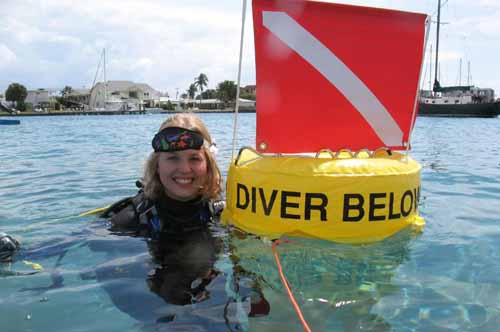I carry a DSMB with me on every dive, especially in Cozumel or any sort of drift diving. Whether I deploy it or not it depends on certain factors. For example, if i'm diving with a group and ending my dive at the same time as the divemaster, I won't bother deploying it since i'm already with that group. If i'm diving in the north where seas/waves/currents can be unpredictable I always inflate mine even if the DM has already inflated theirs. It gives the boat captain another reference to locate the dive group in rough waters. The same rule appears for places like Maracaibo/Punta Sur Sur or if I'm separated from the group. I've been on dives in Cozumel many times where weather turned crappy fast, heavy downpours, making it very difficult for a boat captain to locate an SMB on the surface.
Here's another thing, discuss whether or not you want to deploy your SMB with the boat crew/dive master BEFORE the dive. It can be part of your dive plan. I simply explain that if I get separated or other conditions, I am going to shoot an SMB. Mine has my name in huge letters written on both sides so they can identify me. Tell them what to expect so they are not surprised.
In the event you do get separated from the group waiting until you surface to deploy your DSMB/SMB (whatever you want to call it) is a poor choice. You want to give the boat captain a better chance of spotting you before you drift too far out of visual range. If you're lost and wait until the surface to deploy an SMB, currents may have already pushed you a significant distance making it harder for the boat to visually locate you.
[/I]I just can't see any useful reason for both terms to exist, since in every instance I can think of it's perfectly clear what is being referred to without having to include the "D" as a prefix to "SMB". The addition of a "D" prefix just isn't useful unless there exists some kind of commonly used SMB that is impossible to deploy underwater.
SMB and DSMB are technically two different products but the term is often used interchangeably. It's all semantics. A DSMB typically has an (OVP) over pressure relief valve so that if it is shot from depth the pressure can safely escape. An SMB on the other hand does not have an OVP valve or an opening at the bottom where excessive air can escape/vent; It is designed to typically only be inflated at the surface.
I agree with your point. There is nothing stopping someone from putting an SMB on a reel and inflating it from depth, thereby making it or calling it a DSMB

However in the event too much air is added at a significant depth you risk over-inflating the SMB and damaging it. I've seen plenty of SMBs inflated at depth without issues so this isn't always a concern, especially when inflating from a shallow depth. With an SMB on a reel, I only inflate partially at a depth of 10m/33fsw and let the expanding pressure do the work. Example: 33fsw is 2ATA, gas volume compresses 1/2. If inflate around half full at depth of 33fsw/10m, it should be full on surface
With that being said, A DSMB is a much better choice from inflating at depth because you'd have to worry about over expansion since they have a pressure relief valve or a way for excess air to vent.





